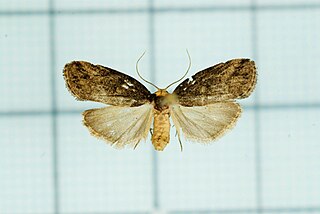
Aemene is a genus of moths in the family Erebidae first described by Francis Walker in 1854. They are found in Japan, throughout India, Myanmar and Sri Lanka.

Chamaita is a genus of moths in the subfamily Arctiinae. The genus was erected by Francis Walker in 1862. Species are distributed throughout India, Sri Lanka, and Borneo.

Eugoa is a genus in the family Erebidae, subfamily Arctiinae. The genus was erected by Francis Walker in 1858. They are found in India, Sri Lanka, Myanmar and Borneo.

Hemonia is a genus of moths in the family Erebidae first described by Francis Walker in 1863. They are found only in Sri Lanka and Borneo.
Narosodes is a genus of moths in the family Erebidae erected by Frederic Moore in 1887.

Arrade is a genus of moths of the family Erebidae described by Francis Walker in 1863.

Schistophleps is a genus of moths in the family Erebidae first described by George Hampson in 1891.

Culladia is a grass moth genus of subfamily Crambinae, tribe Crambini. Some authors have assigned the synonymous taxon Nirmaladia to the snout moth family (Pyralidae), where all grass moths were once also included, but this seems to be in error.
Surattha is a genus of moths of the family Crambidae. The genus was synonymized with Prionapteryx by Stanisław Błeszyński in 1967. Its status was later revised by Graziano Bassi and Wolfram Mey in 2011.

Hydrillodes is a genus of litter moths of the family Erebidae first described by Achille Guenée in 1854. Its validity is somewhat disputed.
Niaccaba is a monotypic moth genus of the family Noctuidae first described by Francis Walker in 1866. Its single species, Niaccaba sumptualis, described by the same author one year earlier, is found in Sri Lanka, the Ryukyu Islands and Borneo.

Perina is a genus of tussock moths in the family Erebidae. It was described by Francis Walker in 1855 and is found in China, Sri Lanka and throughout India.
Alex is a genus of moths in the family Geometridae.

Corymica is a genus of moths in the family Geometridae described by Francis Walker in 1860.

Hyposidra is a genus of moths in the family Geometridae first described by Achille Guenée in 1857.
Pomasia is a genus of moths in the family Geometridae.

Sauris is a genus of moths in the family Geometridae erected by Achille Guenée in 1857.

Timandra is a genus of moths in the family Geometridae first described by Philogène Auguste Joseph Duponchel in 1829.

Epiplema is a genus of moths in the family Uraniidae described by Gottlieb August Wilhelm Herrich-Schäffer in 1855. A number of species have been reassigned to Europlema.

Thumatha fuscescens is a moth of the family Erebidae first described by Francis Walker in 1866. It is found in Australia, South-East Asia, India, Sri Lanka, the Comoros, Réunion, Madagascar, and Gabon.














